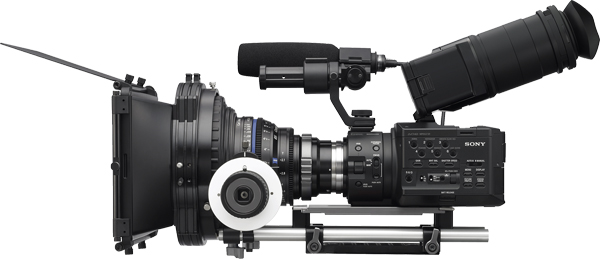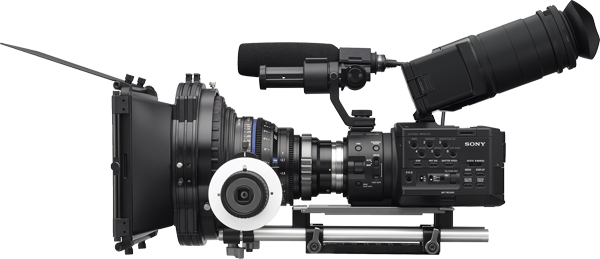
Smarter than your average codec: the AVCHD encoder in Sony’s NEX-FS100U.
Compression encoders are “content-adaptive.” They keep a watchful eye on the complexity of the video signal and make content-based adjustments on the fly. Now a new generation of encoders adds a clever twist. On Sony NXCAM camcorders such as the NEX-FS100U and HXR-NX5U, our proprietary AVCHD encoder is not only content-adaptive, but also operations-adaptive. When you engage camera gain, the control bus signals the encoder, which adjusts accordingly. For example, when you boost the gain, the codec anticipates noise in the scene, minimizes the loss of encoding bits to noise and improves picture quality. When you cut the gain, the codec maximizes picture detail. As a result, you get a substantial advantage: image quality optimized for each gain setting.
Unexpected diversity
You can’t assume that all encoders for a given format are identical, for example that one AVCHD encoder is just like any other. In reality, differences abound. While a video format defines the available compression tools and the proper syntax, it often does not require that every tool be used. Inexpensive products can create a 100% compliant bitstream while ignoring tools that may be too complex. Even when a tool is used, the format does not specify exactly how. For example, motion vectoring can weed out redundancy, making more bits available for better picture quality. But smarter motion vectoring can achieve even higher picture quality.
These differences give an advantage to camera designers willing to devote the time, money and power consumption to sophisticated compression engines. Another advantage goes to traditional pro camcorders over DLSRs, because a larger camcorder body can better dissipate the heat of a high-performance encoding chip. Sony professional camcorders incorporate powerful encoding chips, supplied with millions of transistor gates, developed by large teams of mathematicians and programmers. Our goal is to optimize picture quality by taking the smartest advantage of every available encoding tool.
From content-adaptive to operations-adaptive
The camera’s gain setting matters to compression because of video noise. Noise interferes with dark areas of the scene and becomes most evident in low-light shooting. What’s worse, compression encoders can’t tell the difference between noise and desired image detail. All too often, encoders waste bits trying to describe meaningless noise. This degrades other aspects of the compressed picture.
For the NEX-FS100U and HXR-NX5U NXCAM camcorders, Sony engineers reasoned that if there were some way to “tell” the encoder whether the image was noisy or generally noise-free, the encoder could optimize the picture for each condition. So the camera’s control bus communicates the gain setting to the encoding chip, which adjusts the compression accordingly.
When you boost the gain, you’re generally shooting in low light and noise becomes a greater issue. The encoder adapts the compression, concentrating more bits on actual picture information, spending fewer bits trying to encode meaningless noise. Because fewer bits are wasted, the picture is better. When you cut the gain, you’re generally shooting in bright conditions and you’re less worried about noise. The encoder is free to devote more bits to fine picture detail than a generic encoder would dare. More detail means that once again, the picture is better.
Where typical encoders can only provide a one-size-fits-all compromise, Sony optimizes the picture for each specific gain setting with our operations-adaptive encoder. Think of it as adaptation leading to evolution.

